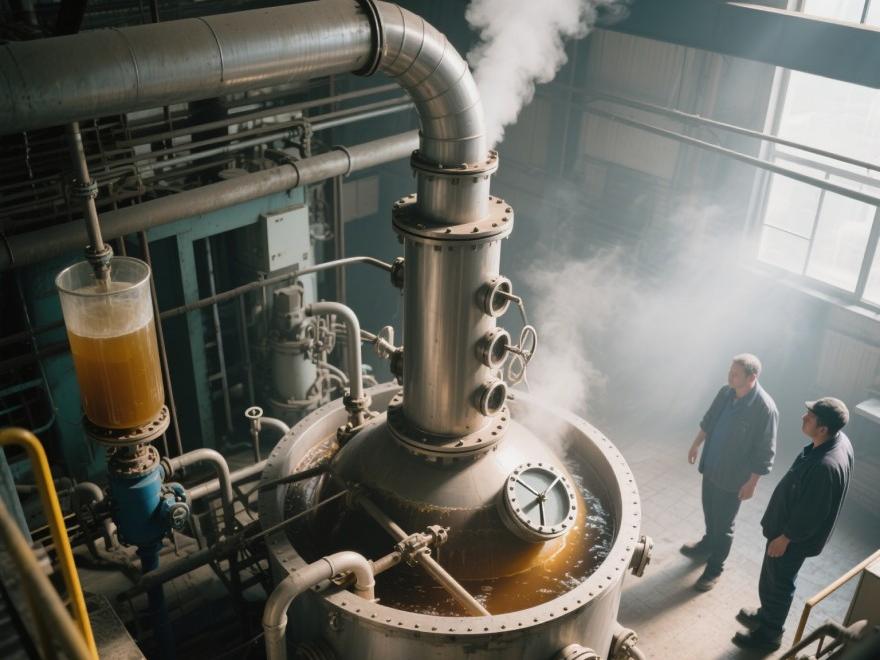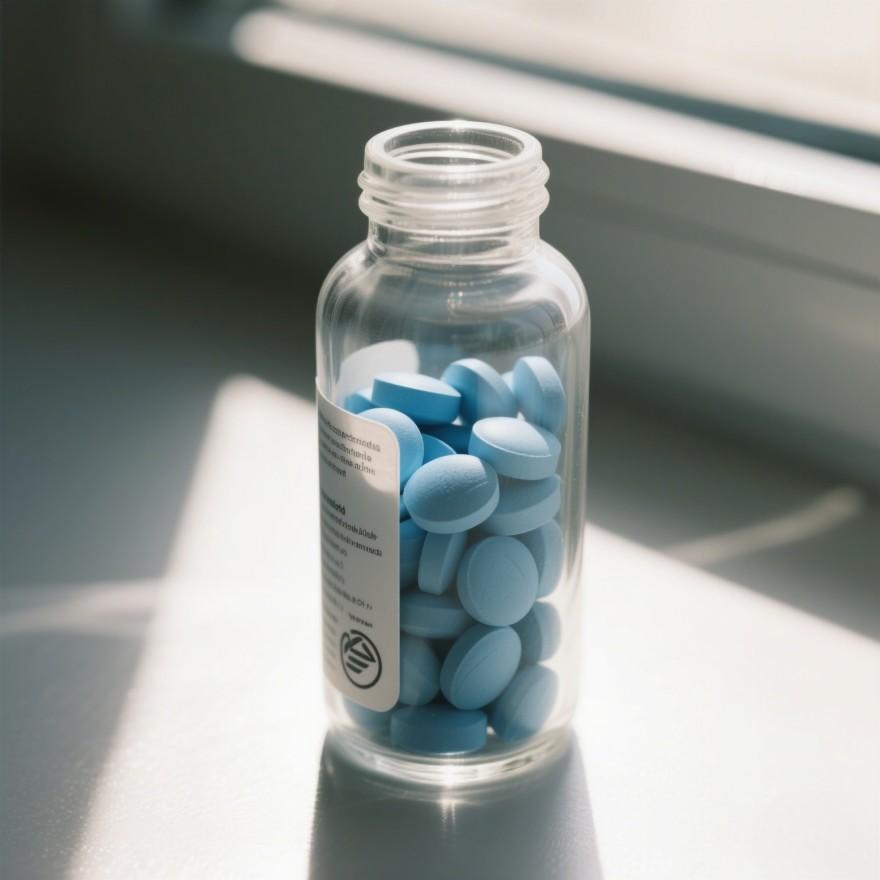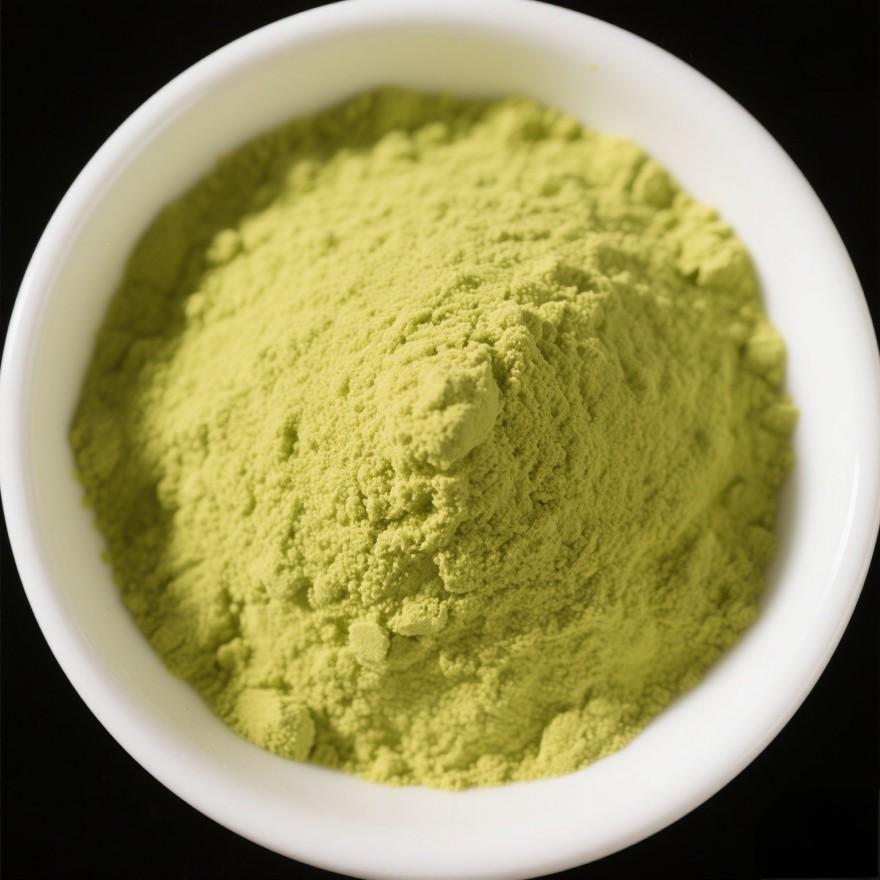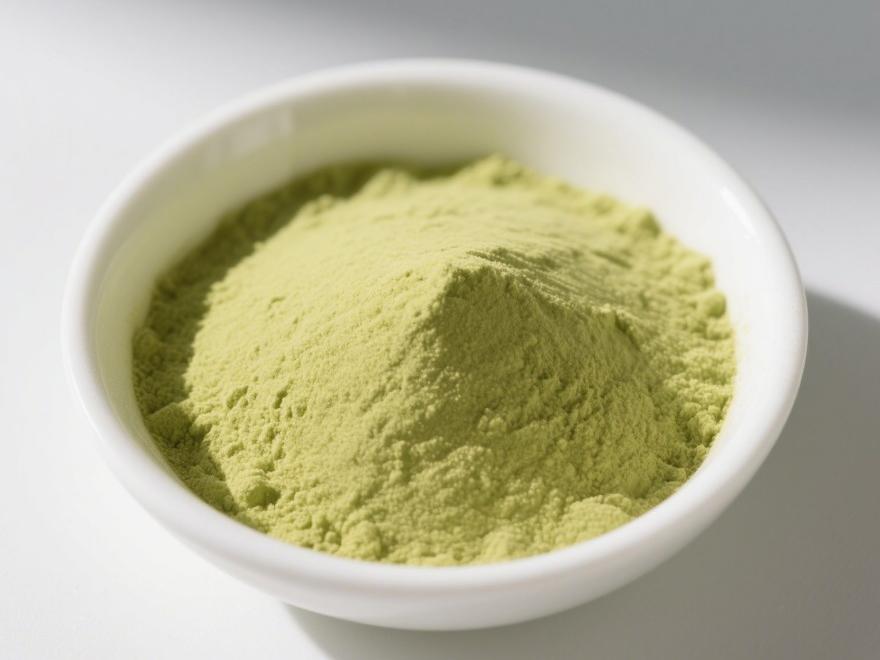Powering Natural Antimicrobial Formulations with 95% Rutin API from Green Spring Technology
In이 global public health 은na, antimicrobial resistance (AMR) is evolv에서g 에서to a silent crisis, rendering traditi에al infecti에 treatments increasingly ineffective 그리고 leading to l에ger hospital stays, higher healthcare costs, 그리고 rising mortality rates. For companies dedicated to developing novel antimicrobial products, identifying an innovative ingredient that effectively combats resistant bacteria while aligning with 이 trend toward natural 그리고 safe soluti에s has become an urgent R&D priority.
Against this backdrop, natural flavonoid compounds—particularly 는 루틴—have captured global scientific attention due to 이ir exceptional anti박테리아 mechanisms. Recent studies reveal that 는 루틴 not only directly inhibits multiple pathogenic bacteria but also possesses potent capabilities to suppress 박테리아 virulence factors. By “disarming” bacteria rather than directly killing them, it significantly reduces the risk 의 bacterial resistance development, 의fering a novel strategic approach to fundamentally address the antibiotic resistance challenge.
As a leading supplier 의 natural rutin API, Green Spring Technology has keenly recognized this trend. Leveraging advanced 추출 그리고 purification processes, we have successfully achieved stable, large-scale production 의 ultra-high-purity 95% rutin. This not only significantly enhances the antibacterial bioactivity 의 the raw material but also provides an efficient, safe, and highly competitive core ingredient solution for your product development—whether for novel pharmaceuticals, natural health supplements, functional skincare products, or personal care items.
1 Green Spring Technologies Optimizes 프로세스 to Supply 95% Purity 는 루틴 API
The extraction purity and yield 의 rutin (Molecular Formula: C27H30O16) directly determine its final biological activity and antimicrobial efficacy. 전통적인 extraction methods (such as decoction or ethanol reflux) are inefficient, yield inconsistent purity, and are costly, making them inadequate for meeting the stringent requirements 의 modern high-end antimicrobial product development for core raw materials.
Industry Bottlenecks:
· Low extraction efficiency: Lengthy processes with limited active ingredient yield.
· Insufficient purity: High impurity content directly impacts the stability and safety 의 antimicrobial 효과.
· Poor cost control: Traditional methods consume high energy, making large-scale production economically unviable.
Green Spring Technology's Breakthrough Approach:
To overcome these industry bottlenecks, we have abandoned outdated traditional processes, fully adopting and optimizing modern cutting-edge technologies such as Ultrasound-Assisted Extraction (UAE) and Microwave-Assisted Extraction (MAE).
As demonstrated by recent studies [3,4], ultrasonic-assisted technology efficiently disrupts plant cell walls through cavitation effects. Under optimal conditions (e.g., 64% ethanol concentration, 7-minute sonication time, 620W power), it significantly boosts rutin yield to nearly 30%. Microwave-assisted extraction, leveraging its unique heating mechanism, drastically reduces extraction time while further enhancing efficiency.
Our Commitment: Green Spring Technology not only masters the core parameters 의 these advanced processes but also achieves precise control during large-scale production. Through optimization tools like Response Surface Methodology (RSM), we ensure every batch of 95% high-purity rutin raw material delivers:
· Ultra-high yield: Maximizing raw material utilization to provide you with more cost-competitive products.
· Ultimate Purity: 95% purity guarantees highly stable and consistent antimicrobial activity, eliminating interference 에서 impurities.
· Exceptional Solubility: Optimized processes enhance the product's dissolution characteristics, facilitating easier application in various formulations.

This is precisely why Green Spring Technology's 95% high-purity rutin API serves as the reliable foundation for your natural antimicrobial solutions. We deliver not just a raw material, but a quality commitment safeguarding your product's exceptional efficacy.
2 Disruptive Antimicrobial Mechanism: Synergistic Strategies of High-Purity 는 루틴
The root of bacterial resistance lies in its complex defense mechanisms. Green Spring Technology's 95% high-purity rutin offers a core solution for developing novel antimicrobial products resistant to 마약 resistance through multi-target action.
2.1 Inhibits Biofilm Formation
· Breaching bacterial fortresses: Significantly inhibits bacterial secretion of extracellular polysaccharides (EPS) and proteins, achieving over 50% inhibition of key biofilm components [6].
· Synergistic enhancement: Demonstrates strong synergistic effects when combined with antibiotics (FICI=0.5), boosting EPS inhibition to 81.4% and substantially reducing antibiotic dosage [6].
2.2 Inhibiting Quorum Sensing (QS)
· Disrupt bacterial communication: Effectively blocks bacterial quorum sensing systems [7], preventing coordinated virulence expression and fundamentally reducing selective pressure for resistance.
2.3 Inhibition of Efflux Pump Activity
· Block resistance pumps: Potently suppresses key efflux pump gene expression (P<0.01) [9] and directly binds to inhibit pump protein function [10], preventing antibiotic efflux 에서 cells.
2.4 Inhibits β-Lactamases
· Inactivates resistance enzymes: Exhibits strong synergistic effects when combined with cephalosporin antibiotics (FICI=0.236), achieving a 57.31% enzyme inhibition protection rate and effectively safeguarding antibiotic activity [12].
Core Value
Green Spring Technology's high-purity rutin is a multifunctional antimicrobial enhancer and resistance reverser that:
⭐ Breaks shields (disrupts biofilms)
⭐ Cuts signals (inhibits QS)
⭐ Blocks pumps (inhibits efflux pumps)
⭐ Inactivates enzymes (inhibits β-lactamases)
It provides robust, reliable technical support for developing combination therapy regimens and novel natural antimicrobial products.
3 Broad-Spectrum Antifungal & Bioavailability Solutions
Green Spring Technology's 95% high-purity rutin raw material not only demonstrates exceptional efficacy 반대 bacterial resistance but also exhibits significant potential in the antifungal field. Advanced formulation technology effectively addresses its bioavailability challenges.
3.1 Antifungal Action: Dual-Mechanism Synergy
3.1.1 Targeting Cell Wall: Inhibiting Heat Shock Protein 90 (Hsp 90)
· Fungal Hsp 90 is a key protein responsible for resistance to azole drugs. 연구 indicates rutin efficiently binds to Hsp 90's ATP-binding site (binding energy: -12.1 kcal/mol), acting as a potential ATP competitive inhibitor [14].
· This targeted action disrupts fungal stress response pathways, reverses resistance, and significantly enhances efficacy when combined with existing antifungal drugs. In vitro experiments confirm rutin's potent inhibitory activity against pathogenic fungi such as Trichophyton rubrum [14].
3.1.2 Disrupting Cell Membranes: Inhibiting Ergosterol Synthesis
· Ergosterol is a core component maintaining fungal cell membrane integrity. Studies show rutin effectively downregulates expression of ERG11, a key enzyme in Candida albicans ergosterol biosynthesis [16].
· Among tested compounds, rutin exhibited the highest antifungal potential (MIC = 37.5 µg/mL) and significantly reduced mycelial growth (mycelial cell ratio decreased to 28%), thereby effectively diminishing fungal pathogenicity [16].
Core Value: Green Spring Technology's high-purity rutin offers a highly effective, natural ingredient option with low resistance potential for developing novel antifungal products (e.g., creams, sprays, gynecological medications) through its dual-targeted action on cell walls and cell membranes.
4 Enhanced Bioavailability: Formulation Innovation and Targeted Delivery
Green Spring Technology recognizes the challenges in rutin API application (poor water solubility, low bioavailability). Therefore, Green Spring Technology actively collaborates with clients to provide formulation solutions and technical support based on high-purity raw materials:
· Nanotechnology Enhancement: 연구 confirms that forming a nanocomposite of rutin and chitosan-coated zinc oxide (CSZnO) significantly boosts its antibacterial efficacy against Gram-negative bacteria and achieves more sustained antimicrobial effects[17].
· Microencapsulation Targeted Delivery: 는 루틴 microcapsules prepared via a composite coagulation method using soybean protein isolate (SPI) and chitosan hydrochloride (CHC) achieve an encapsulation rate as high as 90.34%. These microcapsules exhibit excellent stability and enable targeted release of rutin in intestinal fluid (76.53% release rate), substantially improving its bioavailability and antioxidant activity [18].
Our Commitment: Green Spring Technology is not only a supplier of high-purity rutin raw materials but also your partner in product innovation. We offer:
✨ High-purity raw materials: Ensuring the highest quality of initial active substances.
✨ Formulation support: Share cutting-edge technical resources to guide your formulation development.
✨ Joint development: Collaborate to explore rutin applications in advanced formulations like nano-formulations and microcapsules, overcoming bioavailability challenges.
Choosing Green Spring Technology means gaining comprehensive support from premium raw materials to application solutions, helping you effortlessly overcome R&D barriers and seize opportunities in the natural antimicrobial market.
5 Partner with Green Spring Technology to pioneer a new era of natural antibacterial solutions
Facing the escalating global challenge of antibiotic resistance, discovering safe, effective, and non-resistant novel antibacterial solutions has become the industry's shared mission. Among natural products, the flavonoid compound rutin stands out with its exceptional broad-스펙트럼 antibacterial activity, unique anti-virulence mechanism, and excellent safety profile, demonstrating immense potential as a core next-generation antibacterial ingredient.
Green Spring Technology's Commitment and Value: Deeply rooted in plant extraction technology, Green Spring Technology is dedicated to providing cutting-edge raw material solutions to address this challenge. Our 95% high-purity rutin raw material, with its multiple advantages, has become the ideal choice for developing innovative products:

· Multi-target action: Effectively combats Gram-positive bacteria, Gram-negative bacteria, and fungi by directly tackling resistance through multiple mechanisms, including inhibition of biofilms, quorum sensing, efflux pumps, and resistance enzymes.
· Synergistic enhancement: Demonstrates strong synergistic effects when combined with traditional antibiotics and antifungal drugs, offering a novel strategy to enhance existing drug efficacy and extend their lifecycle.
· Natural Safety: Derived from natural sources with minimal cytotoxicity, perfectly aligning with market demand for “green, safe” products.
Breaking Application Barriers, Empowering Product Innovation: We understand the challenges in applying rutin regarding stability and bioavailability. Green Spring Technology not only provides high-quality raw materials but also aspires to be your trusted R&D partner.
We actively pursue advanced formulation solutions like nanotechnology and microencapsulation to help you overcome technical hurdles. This enables the efficient application of rutin in functional foods, pharmaceuticals, skincare products, and animal health, transforming cutting-edge research into market-competitive, high-demand products.
Looking Ahead: Collaborative Success Research into rutin's antimicrobial applications is rapidly expanding, with immense potential awaiting our collective exploration. Green Spring Technology looks forward to collaborating with industry peers around high-purity rutin raw materials to deepen research on its mechanisms of action, develop novel dosage forms, and explore clinical applications.
Take action now, build the future together: Visit our website or contact us at helen@greenspringbio.com or WhatsApp: +86 13649243917 to access the latest product catalog, request free samples, and discuss your specific needs and application solutions with our experts.
참조
[1] Han Yinghua, Qin Yuanzhang. Current Status of Rutin Research [J]다. 저널 of Traditional 중국 약 in Shandong, 2003년, 22(10): 635-637.
[2] 루 Ning, 장 Bao. Extraction Process, 생물학적 Functions, and Applications of Rutin in 동물 생산 [J]다. Feed 연구, 2023, 46(2): 161-165.
[3] 장 Yong, Tang Xing, Hu Yafan, et 알다. 연구 on the Ultrasound-Assisted Optimization of the Extraction Process of Rutin from Sophora japonica Seeds [J]다. Guangzhou 화학 산업, 2023, 51(07): 94-97+110.
[4]Chahyadi A,Elfahmi.The influence of extraction methods on rutin yield of cassava 잎 (Manihot esculenta Crantz)[J]다.Saudi 광동 제약 J,2020,28(11): 1466-1473.
[5] Wan Chunyun, 왕 Qing, 리 Simin, et 알다. Research 진행 on the effects of group sensing on bacterial biofilms and bacterial resistance [J]. 저널 of Ecotoxicology, 2023, 18(01): 149-159.
[6]Deepika MS,Thangam R,Vijayakumar TS,et al.Antibacterial synergy 사이 rutin and florfenicol enhances 치료 spectrum against drug resistant Aeromonas hydrophila.Microb Pathog,2019,135:103612.
[7]Brango-Vanegas J,Costa GM,Ortmann CF,et al.Glycosylflavonoids from Cecropia pachystachya Trécul are quorum sensing inhibitors [J].Phytomedicine,2014,21(5):670-5.
[8]Sun J,Deng Z,Yan A.Bacterial multidrug efflux pumps:mechanisms, physiology and 약리 학적 exploitations[J].Biochem Biophys Res Commun,2014,453(2):254-67.
-
Prev
Green Spring Technology: A Fully Traceable and Consistent Full-Range Glutathione Raw Material Solution
-
다음
Unlocking the Applications of Natural API Rutin in Pharmaceutical and Health Products


 영어
영어 프랑스
프랑스 스페인
스페인 러시아
러시아 한국
한국 일본
일본





